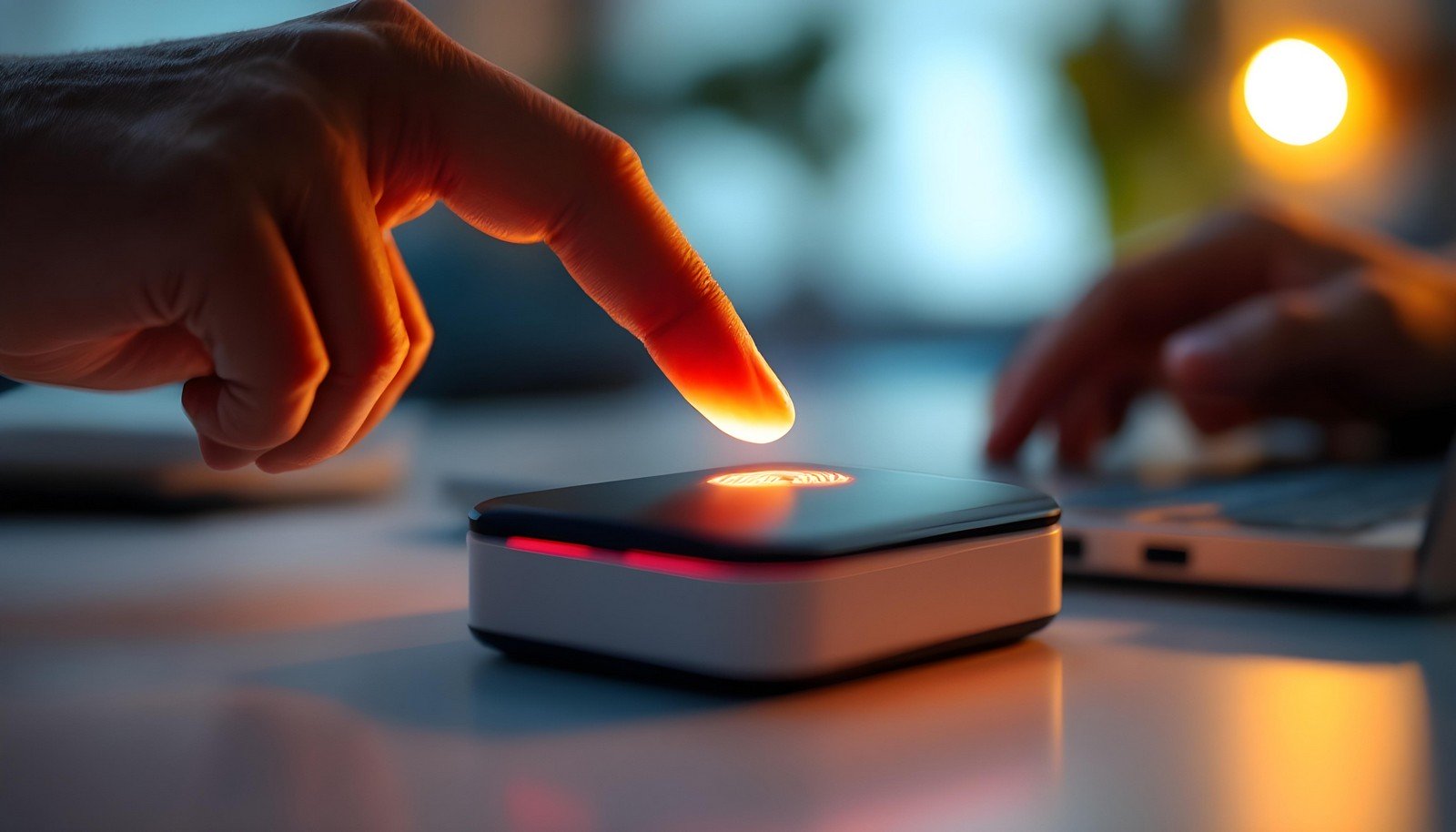Fingerprint Scanner

Quick Navigation:
- Fingerprint Scanner Definition
- Fingerprint Scanner Explained Easy
- Fingerprint Scanner Origin
- Fingerprint Scanner Etymology
- Fingerprint Scanner Usage Trends
- Fingerprint Scanner Usage
- Fingerprint Scanner Examples in Context
- Fingerprint Scanner FAQ
- Fingerprint Scanner Related Words
Fingerprint Scanner Definition
A fingerprint scanner is a biometric device that uses an individual's unique fingerprint patterns for identification and authentication. It works by capturing the pattern of ridges and valleys on a finger and comparing it to stored data to verify identity. Fingerprint scanners are used in a variety of applications, including unlocking smartphones, securing confidential data, and enhancing workplace security. Common technologies include optical, capacitive, and ultrasonic scanning.
Fingerprint Scanner Explained Easy
Think of a fingerprint scanner as a lock that only opens with your fingerprint. Just like everyone has a unique face, each person has a special fingerprint. The scanner reads your fingerprint like a picture and matches it to its memory to check if it's you!
Fingerprint Scanner Origin
The idea of using fingerprints for identification dates back to ancient Babylon, where fingerprints were used on clay tablets. However, modern fingerprint scanners emerged in the 20th century with the development of optical scanning technologies and advances in computer processing.
Fingerprint Scanner Etymology
The term "fingerprint scanner" derives from the combination of "fingerprint," referring to the unique patterns on human fingers, and "scanner," meaning a device that examines and records data.
Fingerprint Scanner Usage Trends
Fingerprint scanners have seen exponential growth in usage since the 2010s, especially with their incorporation into consumer electronics like smartphones and laptops. Industries such as banking, law enforcement, and healthcare also increasingly rely on fingerprint technology for security and identification.
Fingerprint Scanner Usage
- Formal/Technical Tagging:
- Biometric Authentication
- Security Systems
- Identity Verification - Typical Collocations:
- "fingerprint scanner integration"
- "biometric security scanner"
- "optical fingerprint scanner"
- "fingerprint recognition system"
Fingerprint Scanner Examples in Context
- Many smartphones use fingerprint scanners to unlock the screen or authorize payments.
- Airports often use fingerprint scanners as part of their border control systems to verify travelers' identities.
- A fingerprint scanner can ensure that only authorized personnel access restricted areas in a workplace.
Fingerprint Scanner FAQ
- What is a fingerprint scanner?
A fingerprint scanner is a device that uses fingerprints for identifying or verifying a person. - How does a fingerprint scanner work?
It captures an image of your fingerprint and compares it with stored data to confirm identity. - Are fingerprint scanners secure?
Yes, they are highly secure but not entirely foolproof, as advanced hacking methods can bypass some systems. - Where are fingerprint scanners used?
In smartphones, banking, healthcare, law enforcement, and security systems. - Can fingerprint scanners be fooled?
Advanced ones, like ultrasonic scanners, are harder to fool than optical or capacitive ones. - Do fingerprints change over time?
Generally, fingerprints remain the same, but injuries or aging can slightly affect them. - What types of fingerprint scanners exist?
Optical, capacitive, and ultrasonic are the most common types. - Is fingerprint data stored securely?
Most modern systems encrypt and securely store fingerprint data. - What are the advantages of fingerprint scanners?
They are convenient, fast, and provide a high level of security. - Do fingerprint scanners work in wet or dirty conditions?
Ultrasonic scanners can work under such conditions, but optical and capacitive ones may struggle.
Fingerprint Scanner Related Words
- Categories/Topics:
- Biometrics
- Security Technology
- Digital Authentication
Did you know?
Fingerprint scanners were first used in forensic investigations in the 19th century, laying the groundwork for their current role in personal and digital security.
PicDictionary.com is an online dictionary in pictures. If you have questions or suggestions, please reach out to us on WhatsApp or Twitter.Authors | Arjun Vishnu | @ArjunAndVishnu

I am Vishnu. I like AI, Linux, Single Board Computers, and Cloud Computing. I create the web & video content, and I also write for popular websites.
My younger brother, Arjun handles image & video editing. Together, we run a YouTube Channel that's focused on reviewing gadgets and explaining technology.



Comments powered by CComment